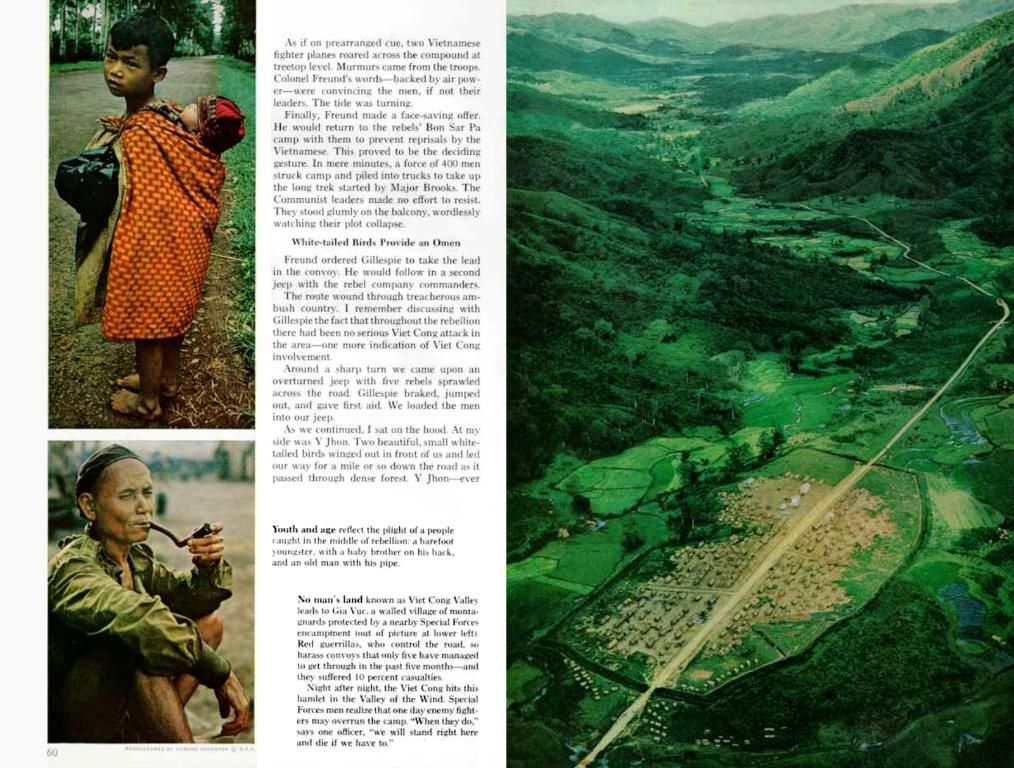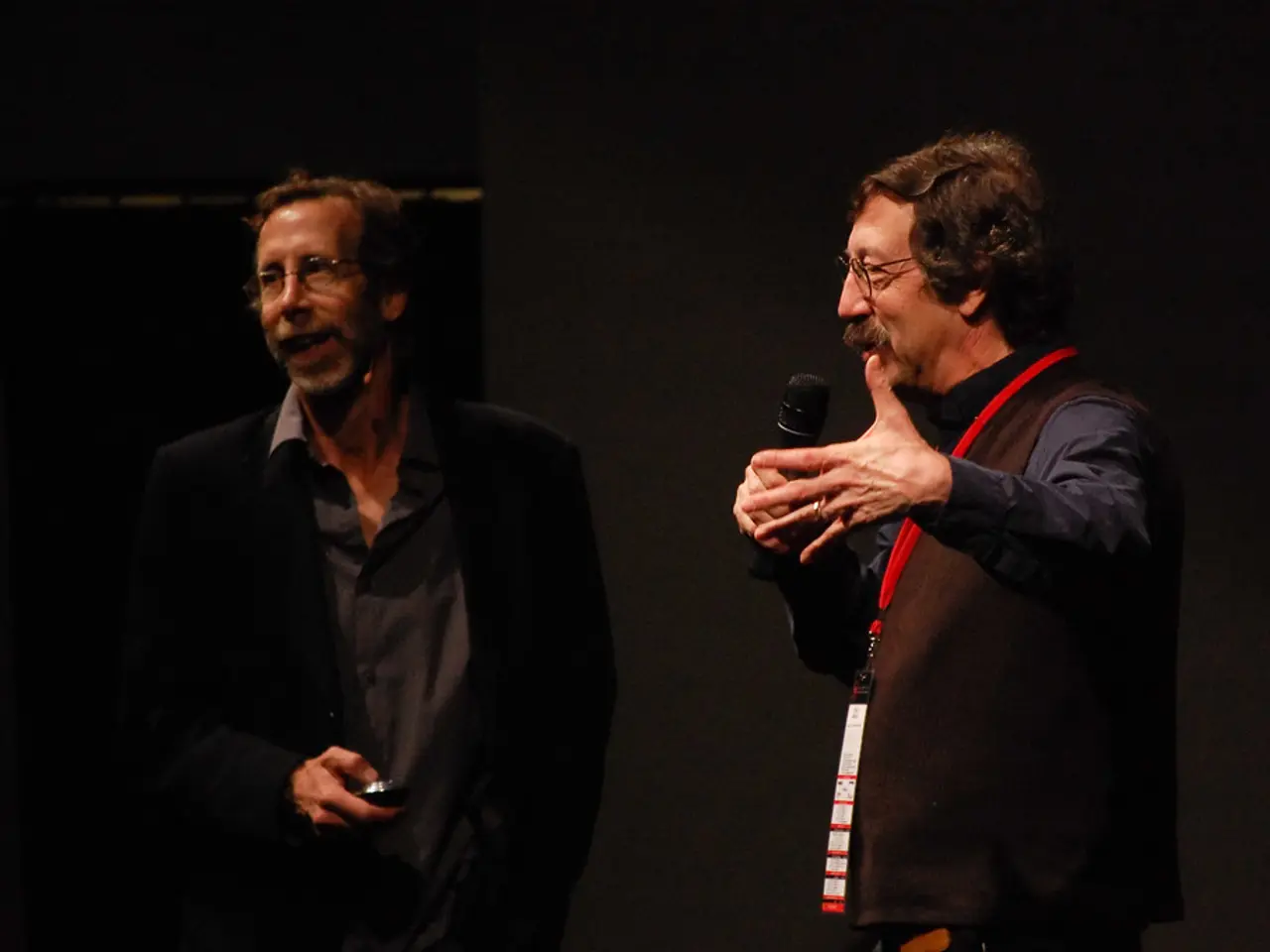Movie special effects' progression throughout the years
Movie magic, the artful deception of making the impossible seem real, has been a cornerstone of film since its inception. Special effects, often invented virtually at the same time as the birth of cinema itself, have been consistently evolving side by side with the medium.
Birth of Magic: Early Years
The origins of special effects can be traced back to the late 19th century, when Georges Meliès, a French illusionist and filmmaker, was a key pioneer. This visionary discovered that he could employ camera tricks to craft magical illusions, showcased in his seminal work, A Trip to the Moon (1902). This groundbreaking film demonstrated early techniques such as stop-motion, double exposure, and hand-painted color.
Practical Beginnings
In the early years, special effects were overwhelmingly created through practical means, making use of in-camera techniques. Stop-motion animation, pioneered by Meliès, featured the photographing of a model or object in small increments, with minor adjustments between each frame, to create the illusion of movement. This technique was heavily utilized in films like The Lost World (1925) and King Kong (1933) to bring dinosaurs and colossal apes to life.
Golden Age and Practical Brilliance
The 1930s to the 1950s represented the Golden Age of Hollywood, a period of tremendous growth and innovation in filmmaking and special effects. During this time, practical effects became more sophisticated, allowing filmmakers to elevate the visual storytelling of their movies.
One crucial development was the application of miniatures and models, allowing filmmakers to craft elaborate sets and landscapes that would have been prohibitively costly to construct full-scale. Matte paintings also came into play during this era, with artists painting expansive, detailed backgrounds on glass or canvas, which were then combined with live-action footage to create the illusion of vast and fantastical environments.
Sound played a major role in special effects during this epoch too. The integration of synchronized sound allowed for more realistic and dynamic sound effects (or "foley"), enhancing the visual impact of on-screen action.
Dawn of Digital: Computer-Generated Imagery (CGI)
The late 20th century ushered in a new era with the advent of CGI. The emergence of computer-generated imagery revolutionized the industry, enabling filmmakers to create intricate and lifelike effects previously unimaginable. The first significant breakthroughs arrived with the release of Tron (1982), which prominently featured computer-generated environments and characters, albeit primitive by contemporary standards.
James Cameron's The Abyss (1989) was another critical milestone, as it introduced the first fully computer-generated character -- a sentient water creature. This was soon followed by the remarkable implementation of CGI in Terminator 2: Judgment Day (1991), featuring the T-1000, a liquid metal robot, foreshadowing the limitless potential of CGI in crafting realistic animations.
But it was Steven Spielberg's Jurassic Park (1993) that truly changed the game. The film combined practical effects with CGI to craft realistic dinosaurs that stunned audiences and established a new standard for visual effects in film. The masterful integration of CGI and live-action footage demonstrated that digital effects could complement rather than replace traditional filmmaking techniques.
Special Effects: Modern Categories
Practical effects encompass any effects produced physically on set, such as miniatures, models, animatronics, pyrotechnics, and prosthetics. Practical effects excel in stunts, explosions, and creature effects, providing an authentic tangibility challenging to achieve with CGI.
Digital effects involve the creation of images via computer, consisting of CGI, digital compositing, and motion capture. Digital effects enable filmmakers to craft anything imaginable, from entire worlds to characters and creatures that could never exist in reality.
The Evolution and Refinement of CGI
As CGI technology evolved, it became increasingly significant to filmmaking, aiding in the creation of increasingly complex worlds. The late 1990s and early 2000s saw the rise of fully CGI-animated films, with the success of Toy Story (1995) leading the way. This landmark film was the first to be entirely created using CGI. The emergence of digital animation set the stage for subsequent titles like Finding Nemo (2003) and The Incredibles (2004), highlighting the rapid advancement of CGI animation.
Meanwhile, CGI began to play a pivotal role in live-action films. Peter Jackson's The Lord of the Rings trilogy showed the immense potential of CGI in crafting epic battles and creatures, with Gollum serving as a prime example. The application of motion capture further boosted CGI realism, as portrayed in Avatar (2009), where the fusion of digital technology and reality blurred the line between fantasy and reality.
Practical Effects in the Digital Age
Despite the widespread use of CGI, practical effects have experienced something of a resurgence in recent years. Appreciation for the tangible, tactile quality of practical effects has grown, coupled with the understanding that they can sometimes seem more believable than their digital counterparts. Filmmakers like Christopher Nolan are known for their preference for practical effects and their use of miniatures and real stunts in films, such as Inception (2010) and Dunkirk (2017), which deliver visually stunning sequences without heavy reliance on CGI.
This fusion of practical and digital effects reflects a popular trend in modern filmmaking, where directors aspire to combine the best of both worlds.
Special Effects: The Future
As technology advances forward, the future shines bright for special effects in film. Emerging technologies like virtual reality (VR), augmented reality (AR), and real-time rendering are laying the groundwork for even more immersive and interactive cinematic experiences, where the boundary between film and reality continues to fade.
The growing accessibility of digital tools means that independent filmmakers today have newfound access to advanced special effects once only accessible to large-scale studios. This democratization of special effects is likely to foster a new wave of creative and innovative films, continuing to push the boundaries of the medium.
Film movements continued to evolve as technology progressed, with visual storytelling immensely benefiting from the fusion of practical and digital effects. The pioneering introduction of Computer-Generated Imagery (CGI) in the late 20th century elevated filmmaking, offering a platform to create intricate and lifelike effects with techniques like stop-motion animation and hand-painted color paving the way. As technology advances, emerging technologies like virtual reality (VR), augmented reality (AR), and real-time rendering are poised to redefine the future of special effects, enabling even more immersive and interactive cinema experiences, and opening up possibilities for filmmakers across the globe.




